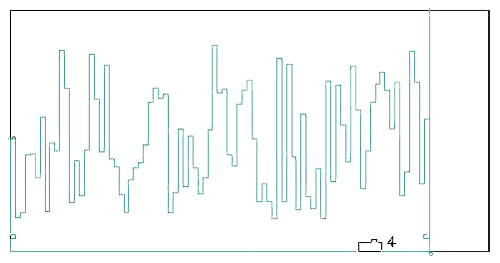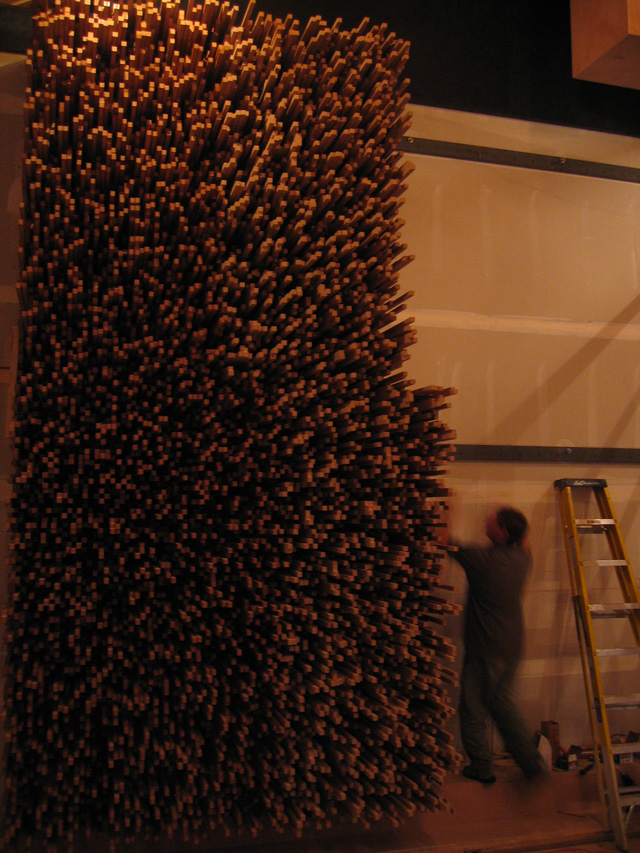Blackbird Studios – ‘Studio C’

The perfectly Acoustically-Balanced “Studio C” at Blackbird Studio, Nashville TN, created for John and Martina McBride by George Massenburg and Ross Bloom using QuickCAM software and modern CNC woodworking machines.

Multiple Grammy and TEC Award winner George Massenburg is an internationally renowned producer, recording engineer, and designer of audio equipment. He is a man in love with music, the art of sound reproduction, and the recording process. In a career spanning more than 30 years, he has worked with such artists as Linda Ronstadt, Bonnie Raitt, Billy Joel, Kenny Loggins, Journey, Phil Collins, Toto, Emmylou Harris, Dolly Parton, James Taylor, Little Feat, Herbie Hancock, Weather Report, Carly Simon, Earth, Wind and Fire, Jon Randall, and the Dixie Chicks. An ardent educator, he is also on the teaching staff at Boston’s Berklee School of Music and Montreal’s McGill University. In addition, he has taken leadership roles in both the Producer and Engineer’s Wing of The Recording Academy and META (Music Engineering and Technical Alliance).

Massenburg recently put the finishing touches on the new Studio C in Nashville’s Blackbird Studio complex.
The Blackbird Studio recording center was created by John and Martina McBride in August 2002 by rebuilding the legendary Creative Recording Studios, originally designed and built by George Augspurger in 1977. Since opening, Blackbird has hosted sessions with the likes of John Hiatt, Sheryl Crow, Jewel, and the Red Hot Chili Peppers. The site now houses four studios, including Massenburg’s Studio C.

To create this unique recording, mixing, and listening space, Massenburg built on his past studio construction experience, which began way back in 1980 with LA’s The Complex. “That’s where we first used the wall and ceiling treatment you see here today,” says Massenburg. Based on Dr. Manfred Schroeder’s application of math to acoustic concepts, and with help from Dr. Peter D’Antonio of RPG, Massenburg integrated sound diffusion technology into architectural acoustics. As a result, incident sound is almost completely controlled by diffusion. It also happens to look like something out of The Matrix.

Construction of the new room utilized 1,532 sheets of 25mm (1″) thick medium-density fiberboard (MDF). Ninety tons of MDF were cut and milled to a final cut weight of 40 tons. Beginning with a room footprint of 36′ x 25′ x 27′, the one-inch square MDF pegs come out of the walls and ceiling in lengths that vary from 150mm (6″) to 1016mm (40″) — and no two of the hundreds of thousands of “tines” are the same length. The room uses 2D diffusion, whereby two-dimensional diffusers offer depth variation in two perpendicular directions, forming a lattice of divided cells or steps of varying depth. “Studio C utilized the largest prime number sequence that has ever been actualized in a room,” notes Massenburg. “Our prime number is 138,167.”
The conundrum for the MDF panel contractors
Ross Bloom says, “When George Massenburg contacted his contractor to supply 1532 unique custom panels the contractor soon realised that they had a problem with meeting the time frame. Most CNC woodworking machines come with software that enables an operator to draw up in a CAD environment or write G-Code that can be read directly by the machine. As most machine operators know it takes time to draw up milling paths and assign tooling. In this case it was taking 15-20 minutes per panel. This just wasn’t quick enough, as stated before every panel was different, yes every panel.”


“Doing this job the conventional way work out; 15 minutes per panel x 1532 panels = 22,980 minutes of hard repetitive work. Even the best operator working 8 hours a day, 5 days a week would have taken 9 weeks to prepare the programs. This just wasn’t going to work!”

Ross Bloom – QuickCAM Systems agent for North America goes on to say, “The machinery supplier contacted me to see if I had a solution. Working with George who had all the numbers required for the project, we were able to link QuickCAM’s parametric framework to George’s numbers and within a couple of days we had the first unique MDF panels were being run on the machine complete with unique label identification. All the panels has a specific location.”

